

|
Cork. Quercus Suber, the bark of the cork oak tree, which is boiled, punched, washed, and coated for use as a wine stopper. Most natural corks come from Portugal. A cork oak needs about 45 years to first grow an outer bark thick enough to be harvested for quality wine stoppers, and after that, the outer bark is harvested about once every nine years. Corkage. A fee charged by a restaurant to customers who bring in their own wine. Cork taint. A mildewy
smell that results from mold on the cork interacting with chlorine
molecules. |
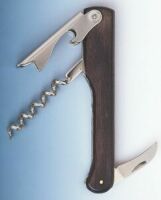 |
 |
 |
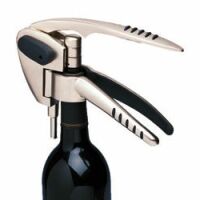 |
| * Waiters $5 - 150 |
Winged $10 - 30 |
Reverse
Helix $8 - 80 |
Rabbit $25 - 150 |
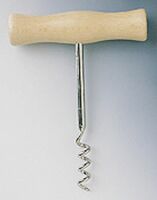 |
 |
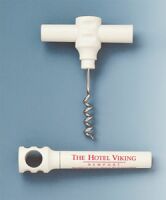 |
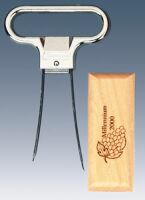 |
T-Handle $3 - 6 |
Pump $10 - 40 |
$0 - 5 |
Twin Prong $5 - 15 |
| I have the above screwpulls and a few more. My favorite is the Waiters because it is quick and convenient. The most fun is the Rabbit. When I want to show off, I use a beautiful Reverse Helix type from Spain (see below). I broke my Pump and I'm not tough enough for the T-Handle. The Winged is not my favorite and I don't like the Twin Prong. I keep the Pocket in my car and travel kit. |
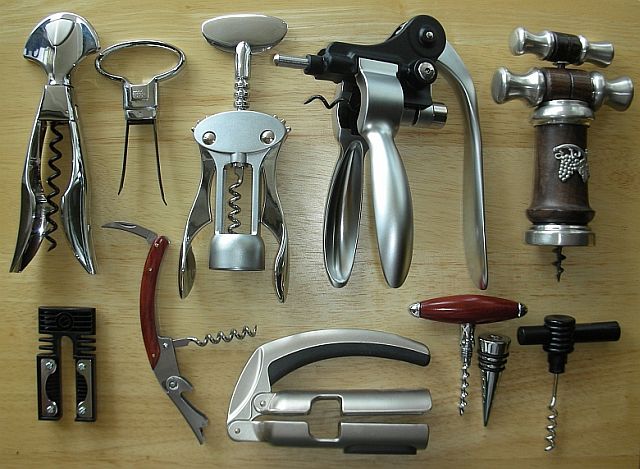
|
A word about the corks these screwpulls are designed to remove. Some wineries have begun using synthetic "corks" in their wines under the pretense of protecting the consumer from tainted or fungus corks. Some California wineries even use a wax material instead of foil to protect the cork. Better for the consumer they say. Don't be fooled. They do it to save money. If synthetic "cork:" and wax compounds were more expensive than true cork and foil, do you really believe they would use them to protect you? Your more expensive corkscrews have the screw teflon coated. These synthetic "corks" will strip that teflon coating in a very short time. If you open a wine with a wax seal and/or synthetic "cork" use a corkscrew with a steel or non-teflon coated screw. If you open a wine with a wax seal and true cork, remove the wax seal with a knife or other tool prior to using your teflon coated corkscrew. I keep two waiters corkscrews handy. My teflon coated one and one with a steel screw pictured above for California wines. Incidentally, the foil on the bottle was designed to capture any seepage and to protect the cork from being eaten by insects or mice while cellared at the winery or at home. This was important and necessary 500 or a thousand years ago. Today's modern wineries, homes and warehouses do not have those problems. The foil is tradition. The wax seal is nothing more than a consumer nuisance. What will they think of next? Screw caps? July 2, 2002 |
Nation Visitors Since March 8, 2013